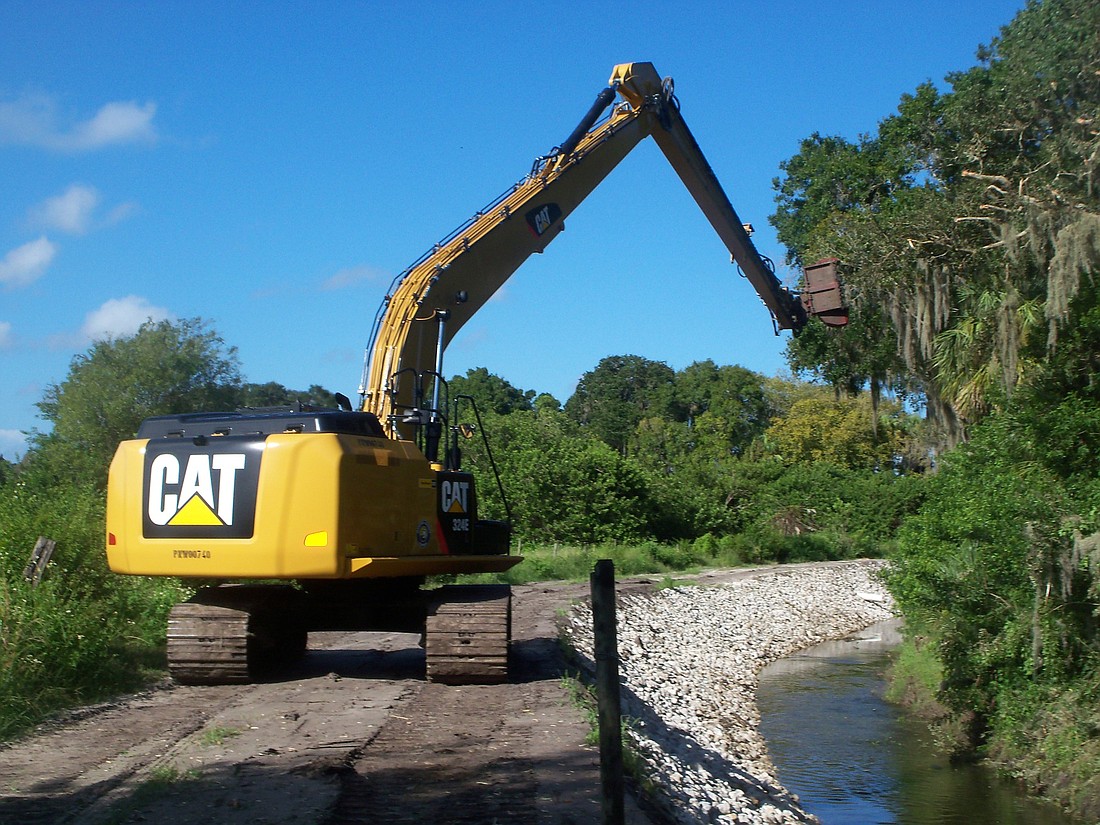- April 25, 2024
-
-
Loading

Loading

As Manatee County commissioners consider implementing a new stormwater fee in unincorporated Manatee County, a top priority will be making the fee fair and equitable.
Residents in many East County communities, such as Country Club at Lakewood Ranch, Summerfield, Greenbrook and
Heritage Harbour, already pay stormwater fees as part of their community development district assessments.
“Out east, we have stormwater fees already charged; however the water still has to flow,” Manatee County District 5 Commissioner Vanessa Baugh said. “We’ve got to figure out how to handle this situation. We have to make sure the people that live in the CDD or HOA communities that already pay a stormwater fee are not charged twice.”
Stormwater systems include ponds, canals, ditches and outlets through which water runs off properties or from streets and eventually flows to natural water bodies such as the Braden and Manatee rivers and the bay. Although many Lakewood Ranch area communities maintain their own stormwater systems, the water still gradually flows to other areas. For Manatee County government, that includes 181 miles of maintained canals, 503 miles of storm pipe, 655 miles of roadside ditches and 14,700 stormwater inlets.
“By default that means it’s now a county issue,” Manatee County Interim Public Works Director Chad Butzow said. “Ultimately, it still has got to get somewhere. You cannot make water go away.
“The countywide fee would be to take care of annual routine maintenance,” he said.
Commissioners on Feb. 28 attended the third in a series of workshops on a proposed stormwater fee, at which they discussed current funding sources and billing methods and possible fee collection methods.
Consultants Jeff Eggers, of HDR Engineering, and Henry Thomas, of PRMG Inc., said rates typically vary by property size and whether it is commercial or residential. The consultants are supposed to bring back information on how fees are collected in other Florida counties at the board’s next workshop, scheduled for March 19. They also are expected to suggest actual costs for the fee’s implementation. With that information, commissioners can consider how to implement the rate, whether making the fee cover the entire cost of stormwater or supplementing with other funds, as is done today.
County officials decided to look at the fee following the no-name storm in August 2017, which caused flooding in areas
where flooding was not previously an issue, including on Tara and Creekwood boulevards.
Butzo said the fee is a way of replacing a portion or all of the county’s current funding sources for stormwater-related maintenance, which includes the solid waste fund, the gas tax fund, phosphate mining fees and the county’s general fund revenue. Butzo said having a designated fee makes more sense and could free up dollars for other types of projects.
Discussions on the fee are preliminary. Ultimately, commissioners could simply continue the existing levels of service and have the fee replace the solid waste fund dollars, for example, or the changes could be more extensive, with creating different classes and sizes of properties, each assigned different stormwater rates.
“We’ve got the cost we’re spending today and we’ve got the cost to (enhance) level of service,” Thomas said.
Manatee County Public Works staff has said it would like to do more proactive maintenance and create an inventory and map of existing stormwater assets. The goal, Butzow said, is to improve public safety, reduce flooding and erosion, enhance transportation and mobility, reduce pollution, improve private and public property protection and reduce disruption to life and business activities in the case of major storm events.
Butzow said even communities with existing stormwater maintenance programs contribute to the county’s stormwater infrastructure program.
For example, in Summerfield and Greenbrook, Manatee County owns the streets, so it is responsible for the structures that drain water from the roadways into retention ponds. The CDD, however, maintains the ponds themselves and the outfall structures within them.
Country Club at Lakewood Ranch owns its roads and incurs all stormwater expenses. In fact, in total its residents spent more than $384,00 in fiscal year 2017 (across CDDs 2, 5 and 6). That figure includes costs for things such as stormwater pond maintenance, repairs to storm drain inlets, environmental engineering and maintenance of conservation and wetland areas, according to budget documents.
Eggert and Thomas said one assessment methodology for the fee could be to base rates not only only property size, but also on when a particularly community was built — before or after state and federal stormwater regulations went into effect.
“If we move forward, the most important thing is that it’s going to be fair and equitable,” Commissioner Misty Servia said. “We’ve got to be able to make sure there’s that rational nexus… It’s got to be analyzed as much as possible.”
Board members said they want to have plenty of public input on the stormwater fee, if the board moves forward with the idea.
Butzow said he did not know how many workshops the board would hold but expects there to be at least three more. Commissioners will decide if and how to proceed with the proposed fee.